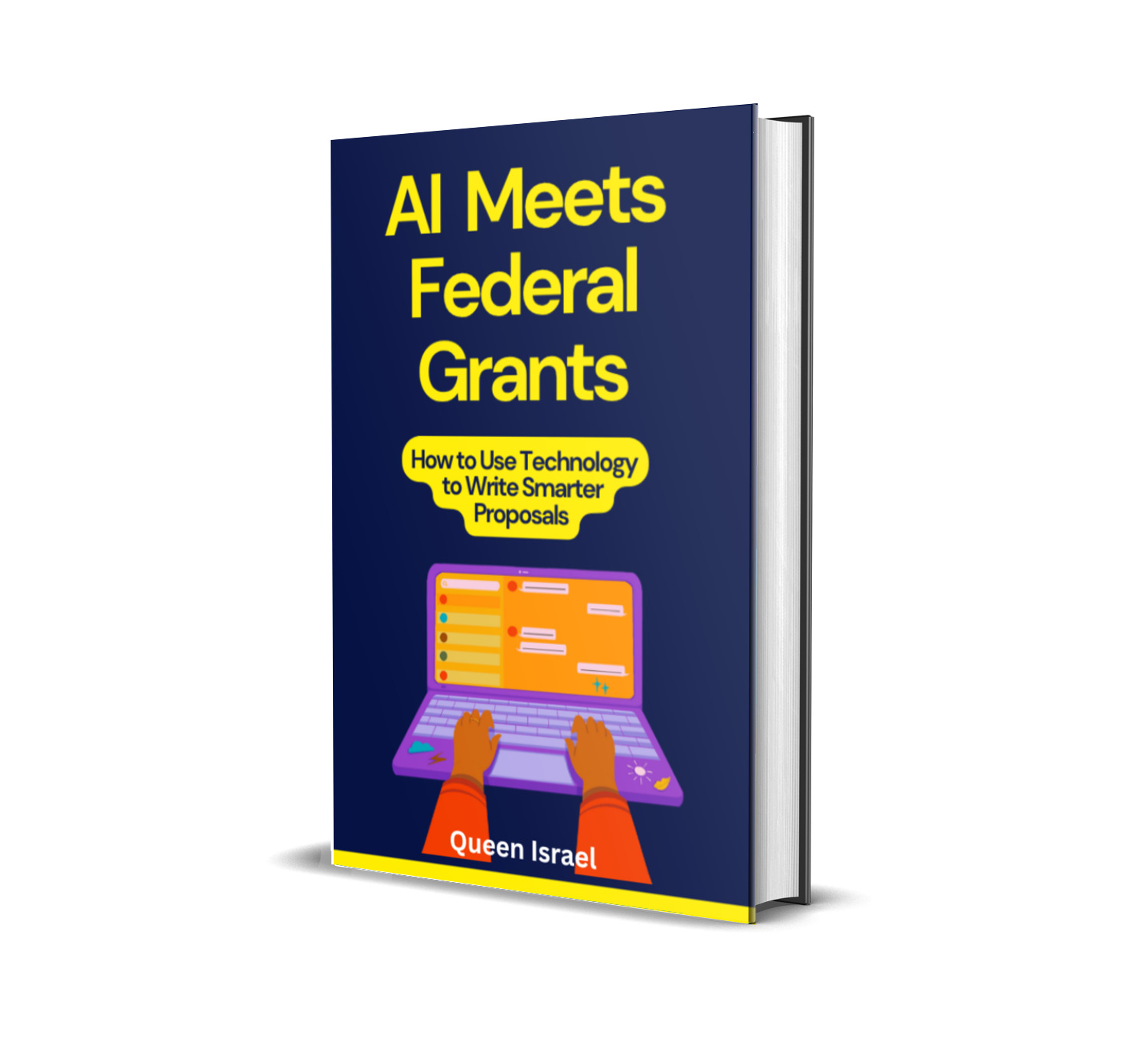Grants for STEM education provide not only crucial financial support , but also serve as a catalyst for innovation, research, and the development of future-ready skill
In today’s rapidly changing world, STEM education—covering science, technology, engineering, and mathematics—has become an essential pillar for economic growth and societal advancement.
As we witness a shift towards a knowledge-driven economy, investing in STEM initiatives is more important than ever.
In this comprehensive guide, we’ll explore the landscape of grant funding, share data and statistics to illuminate trends, and offer personal insights to help you understand why these opportunities are so valuable.
Additionally, you’ll discover strategies to improve your success rates when applying for grants and learn about the resources available through the Grant Writing Academy Newsletter.
The Role of Grants in Enhancing STEM Education
Grants play a significant role in shaping educational programs across all levels—from elementary schools to universities.
They can fund classroom resources, teacher training, after-school programs, research projects, and even community outreach initiatives.
These financial awards are particularly important for under-resourced schools or communities that might not otherwise have access to cutting-edge educational tools and technologies.
A major strength of grant funding is that it can be flexible and targeted.
Whether it’s for developing a new educational program or enhancing existing curricula, grants allow institutions to experiment with innovative teaching methods and integrate technology into everyday learning.
For instance, many schools have used grants to build state-of-the-art laboratories, upgrade computer systems, or implement coding workshops that prepare students for careers in technology and engineering.
Current Trends and Data in STEM Grant Funding
Recent trends indicate a steady increase in funding opportunities for STEM education.
According to data from the National Science Foundation, billions of dollars are allocated each year to support STEM research and education, ensuring that institutions across the nation have the means to cultivate a vibrant, skilled workforce.
In 2020, for example, over $8 billion was distributed in various forms of grant funding related to STEM initiatives.
This trend not only reflects government commitment but also the growing interest from private organizations and foundations that recognize the importance of these fields.
Furthermore, a recent survey by the STEM Education Coalition showed that over 70% of educational leaders believe that enhanced funding through grants has a direct impact on student achievement and long-term career success.
These statistics underline the transformative potential of well-directed grant funding. With increasing competition for these grants, applicants must present well-structured proposals that clearly demonstrate the benefits of their projects, backed by solid data and a clear vision for the future.
A Personal View on the Impact of STEM Grants
As someone who has witnessed the evolution of educational opportunities over the years, I can attest to the transformative power of grants in the realm of STEM.
When I first encountered a grant-funded project that integrated robotics into the classroom, I was impressed by how the initiative not only enhanced student engagement, but also fostered a collaborative spirit among educators and learners alike.
It became evident that innovation in education is most effective when supported by resources that allow experimentation and creativity.
I remember speaking with a teacher who had received a grant to introduce coding into her curriculum. She shared how the additional resources allowed her to buy new computers and provide personalized instruction to her students.
This investment in educational programs did more than just improve test scores; it ignited a passion for technology and engineering among the students, many of whom were inspired to pursue further studies in these fields.
Such firsthand accounts highlight why grants for STEM education are not merely about dollars and cents—they are about nurturing the next generation of innovators and problem solvers.
Key Components of Successful Grant Applications
Successful grant applications typically share several common elements.
By understanding these components, you can improve your chances of securing funding for your STEM projects:
-
Clear Objectives and Outcomes: A strong application outlines specific goals and measurable outcomes. Whether your project aims to enhance classroom learning, increase student engagement in science experiments, or build a community lab for engineering projects, clarity is key. Grant reviewers are looking for proposals that can demonstrate tangible impacts through clearly defined success metrics.
-
Detailed Budget and Resource Plan: Applicants should provide a detailed breakdown of how funds will be used. This includes everything from purchasing technology and equipment to compensating educators and supporting ancillary expenses. A well-planned budget not only reassures reviewers but also shows that the project is sustainable and thoughtfully planned.
-
Evidence-Based Rationale: Incorporating current data, research, and statistics can significantly strengthen your proposal. For instance, citing studies that show improved student outcomes when integrating mathematics with technology can provide compelling evidence for the need for additional funding. Data such as increased test scores or higher college admission rates among STEM program graduates can be very persuasive.
-
Strong Partnerships and Community Involvement: Many grant programs favor proposals that demonstrate collaboration between schools, local businesses, universities, and community organizations. By highlighting partnerships, you can show that your project has a wide-reaching impact and a solid foundation for success.
-
Clear Timeline and Milestones: A realistic timeline with achievable milestones helps ensure that the project remains on track. Outlining short-term and long-term goals provides a roadmap for success and builds confidence in your project’s potential.
Funding Sources and Opportunities for STEM Education
There are several avenues for obtaining grants for STEM education.
These range from federal and state funding programs to private foundations and corporate sponsorships.
Each source has its own set of priorities, application processes, and deadlines.
a) Federal and State Funding
Federal agencies such as the National Science Foundation (NSF) and the Department of Education offer substantial grants for STEM initiatives. These programs are highly competitive but provide significant funding that can support large-scale projects. Additionally, many states have their own grant programs aimed at promoting STEM education locally, often focusing on underserved communities or specialized research areas.
b) Private Foundations and Corporate Sponsorships
Private foundations like the Bill & Melinda Gates Foundation, the Howard Hughes Medical Institute, and various corporate sponsorships offer grants designed to boost educational initiatives.
These grants are typically aimed at projects that demonstrate innovation and have the potential for scalable impact. They often require applicants to showcase how their project aligns with the broader goals of advancing science, technology, and engineering education.
c) Community and Nonprofit Grants
Local community organizations and nonprofits also provide grants for STEM education, particularly for initiatives that have a strong community engagement component.
These grants are usually smaller in scale but can be very effective in supporting grassroots projects that address local needs. They often prioritize partnerships between schools, community centers, and local businesses, highlighting the importance of a collaborative approach.
Strategies to Enhance Your Grant Success
Achieving success in the competitive world of grant applications requires a combination of careful planning, creativity, and persistence. Here are some strategies that have helped me and many others in the field:
-
Research Thoroughly: Spend time researching the specific funding sources available for STEM projects. Understand their priorities, previous awardees, and application requirements. Tailoring your proposal to meet these specific criteria can significantly boost your chances.
-
Engage Stakeholders Early: Involve educators, administrators, industry experts, and community leaders early in the planning process. Their insights and support can help shape a robust and compelling proposal.
-
Utilize Templates and Tools: Leveraging resources such as proposal templates, budgeting tools, and sample narratives can streamline the application process. These resources are available through various grant writing academies and workshops, providing structured guidance to help you craft a winning proposal.
-
Emphasize Impact and Sustainability: Clearly articulate how your project will make a lasting impact. Include data and statistics that show how previous similar initiatives have improved student outcomes. Highlight plans for long-term sustainability beyond the grant period.
-
Seek Feedback: Before submitting your proposal, seek feedback from colleagues or mentors with experience in grant writing. Constructive criticism can help you refine your narrative and address any potential weaknesses in your application.
Data and Statistics: Making the Case for Investment
Numbers tell a powerful story. Here are some key statistics that underscore the importance of investing in STEM education:
-
Economic Impact: A report by the U.S. Department of Commerce indicates that every dollar invested in STEM education can generate up to $10 in economic benefits. This multiplier effect illustrates how effective grant funding can lead to significant returns on investment for communities and the nation as a whole.
-
Workforce Growth: According to recent studies, the demand for STEM-related skills is expected to grow by over 15% in the next decade. This growth is driven by the increasing reliance on technology and innovation in virtually every industry, emphasizing the need for well-funded educational programs that prepare students for these careers.
-
Student Achievement: Data from various educational studies have shown that students participating in grant-funded STEM initiatives often perform better on standardized tests and are more likely to pursue advanced studies in science, technology, engineering, and mathematics. These achievements underscore the transformative impact of investing in STEM education.
-
Diversity and Inclusion: Research has also highlighted that targeted grant funding can help bridge the achievement gap by providing opportunities to underrepresented groups in STEM. Programs funded through grants have led to significant improvements in participation rates among women and minority students in STEM fields.
By presenting such statistics in your grant application, you not only validate the importance of your project but also demonstrate to reviewers that your initiative is backed by empirical evidence and sound research.
Personal Insights and Lessons Leaned
Over the years, my experience with grant writing for STEM education has taught me a few important lessons.
One of the most valuable insights is that the process is as much about storytelling as it is about data. The most successful proposals weave together compelling narratives with solid evidence and clear outcomes.
I have seen firsthand how a well-articulated proposal can change the trajectory of a program.
When a small school received a grant to introduce a robotics program, it wasn’t just about the new equipment or resources—it was about transforming the learning environment, boosting student confidence, and fostering a culture of inquiry and creativity.
That story of transformation is a testament to what innovation in education can achieve when given the proper support.
Another lesson is the importance of persistence. Grant writing is competitive, and rejection is often part of the process.
Each setback offers an opportunity to learn and improve. Seeking feedback, revising your proposal, and continually refining your approach are essential steps toward eventual success.
It is also crucial to keep abreast of new funding opportunities and trends in grant funding. The landscape is always evolving, and staying informed can provide you with the competitive edge needed to secure funding.
Whether you are an educator, an administrator, or a community leader, the willingness to adapt and learn from both successes and failures will serve you well in this field.
The Future of STEM Education and Grant Opportunities
As we look to the future, the importance of STEM education will only continue to grow. With the rapid pace of technological advancements and the evolving nature of work, preparing students with the right skills and mindset is imperative.
Grants for STEM education will remain a critical tool for driving innovation, supporting research, and ensuring that educational institutions can adapt to emerging challenges and opportunities.
Looking ahead, there is a strong push toward integrating digital tools into the classroom, expanding online learning platforms, and developing interdisciplinary approaches that blend science, technology, engineering, and mathematics in novel ways.
These trends are likely to open up new avenues for grant funding and provide further opportunities for institutions to innovate and excel.
Moreover, as public awareness about the benefits of STEM grows, we can expect increased investments from both the public and private sectors.
These investments will not only bolster the resources available for STEM programs but will also drive policy changes that further support educational innovation.
For educators and administrators, this means a growing pool of opportunities to secure funding that can transform educational practices and outcomes.
Practical Tips and Actionable Strategies
For those preparing to apply for grants in STEM education, here are some actionable strategies to consider:
-
Plan Ahead: Begin your research early and identify multiple funding sources. Developing a calendar of deadlines and priorities can help ensure that your proposal is submitted on time.
-
Collaborate: Work with colleagues to create a multi-faceted proposal. Combining expertise from different areas can result in a stronger, more comprehensive application.
-
Highlight Your Impact: Use data, statistics, and case studies to illustrate the potential impact of your project. Whether it’s improved test scores, increased student engagement, or long-term career success, quantifiable results make a compelling case.
-
Focus on Sustainability: Explain how your project will continue to thrive even after the grant funding ends. This might include plans for community partnerships, additional fundraising efforts, or integrating the project into existing school programs.
-
Be Authentic: Let your passion for STEM and education shine through in your proposal. Reviewers are more likely to support projects that demonstrate genuine commitment and a clear vision for the future.
Concluding Thoughts
The importance of STEM education in shaping our future cannot be overstated.
Grants provide a vital lifeline to educators and institutions aiming to build robust, innovative programs that equip students with the skills they need to succeed in a dynamic world.
Through strategic grant funding, schools can transform their educational practices, drive innovation, and create lasting impacts that extend far beyond the classroom.
By understanding the key components of successful grant applications, leveraging data and statistics, and building a supportive network of professionals, you can increase your chances of securing the funding necessary to make your vision a reality.
Whether your goal is to launch a new after-school program, upgrade technology in your classroom, or develop an interdisciplinary curriculum that bridges science, technology, engineering, and mathematics, there is a grant opportunity waiting for you.
In my own journey through the realm of STEM education, I have seen firsthand how grant funding can change lives—not just by providing financial support, but by igniting a passion for learning and discovery.
Every grant received is a step forward in building a more innovative and inclusive educational environment. The impact of these initiatives reaches beyond academic achievement; it fosters a culture of curiosity, resilience, and collaboration that benefits entire communities.
I encourage you to take advantage of the wealth of resources available, including expert advice, practical templates, and community support.
By continuously refining your approach and staying informed about the latest trends in STEM education and grant funding, you can unlock new opportunities for growth and innovation. Remember, every successful grant is a testament to the dedication and hard work that goes into crafting a proposal that truly speaks to the needs of the community.
For those who are eager to further enhance their grant writing skills and maximize their success, subscribing to the Grant Writing Academy Newsletter is a valuable investment in your professional development.
This newsletter will keep you updated on the latest funding trends, provide actionable insights, and connect you with a community of experts dedicated to making a positive impact in STEM education.





